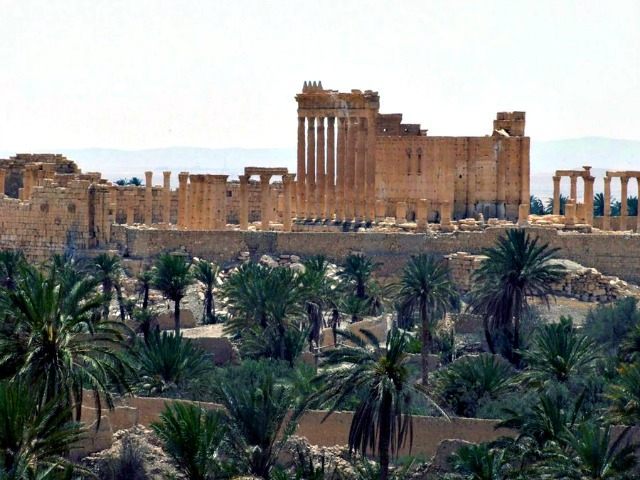The Islamic State (ISIS/ISIL) captured Palmyra, a historic city in Syria that serves as a home to a treasure trove of ancient artifacts. Dread filled historians as pictures surfaced of an ISIS flag on a 100-year-old castle.
Officials in the area have announced that many of the artifacts and antiques have been saved, however, removed from Palmyra before the full takeover by the Islamist group.
“We feel proud as all the museum’s contents were taken to safe areas,” announced Maamoun Abdulkarim, head of the Antiquities and Museums Department in Damascus.
ISIS has consistently destroyed ancient artifacts or sold them on the black market. Militants have published videos and pictures of themselves blowing up tombs, shrines, museums, libraries, and churches. A video in March left the world speechless when they witnessed militants allegedly obliterating Christian artifacts. Baghdad museum director Fawzye al-Mahdi calmed nerves when he told the media the majority of the artifacts were copies, since the originals were taken to Baghdad. Unfortunately, the barbarians did destroy a few originals.
Militants insist the group demolishes these items because they promote idolatry. Yet, before they blow up the buildings, witnesses have repeatedly reported seeing the men leaving with artifacts and antiques a few days before the destruction. The group started with only a few dollars, but selling antiques on the black market propelled ISIS into billionaires.
However, officials and authorities could not do anything about the temples and buildings in Palmyra that earned the city a UNESCO stamp of approval.
“Before taking control of the city [by ISIS], a large number of the items were moved into Damascus, but thousands of the ancient items and sites still remain inside the city,” continued Abdulkarim. “Many are heavy and big, so difficult to relocate.”
Palmyra, 134 miles north of Damascus, is considered an oasis, surrounded by beautiful palm trees. The city first appeared in record in 2000 BC, but became very important under the control of the Roman Empire:
It grew steadily in importance as a city on the trade route linking Persia, India and China with the Roman Empire, marking the crossroads of several civilisations in the ancient world. A grand, colonnaded street of 1100 metres’ length forms the monumental axis of the city, which together with secondary colonnaded cross streets links the major public monuments including the Temple of Ba’al, Diocletian’s Camp, the Agora, Theatre, other temples and urban quarters. Architectural ornament including unique examples of funerary sculpture unites the forms of Greco-roman art with indigenous elements and Persian influences in a strongly original style. Outside the city’s walls are remains of a Roman aqueduct and immense necropolises.
“The destruction is their way of getting back at us [in the West],” explained Clemens Reichel, curator of Mesopotamia at the Royal Ontario Museum. “They know how much we value these historic places.”
He also believes ISIS only wants Syrians to identify with the Prophet Mohammed.
“The more important loss is to the Syrian people,” he continued. “This place is a big part of their national identity. It has linked Muslims, Christian, Druze … everyone. Its history is one thing they all have in common. That seems to be exactly what Islamic State wants to destroy their sense of historic identity.”

COMMENTS
Please let us know if you're having issues with commenting.